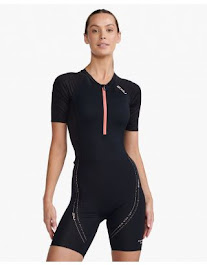What Types Of Swimming Wetsuits Should Women Avoid?
A swimming wetsuit is a fantastic way for women to stay warm and comfortable in the water, but not all wetsuits are created equal. There are certain types of wetsuits that women should avoid if they want to have an enjoyable and safe swimming experience. This blog will explore some types of swimming wetsuits womens should avoid and why.
Ill-fitting wetsuits
Wetsuits that don't fit properly can be uncomfortable and restrict movement, making swimming difficult. Ill-fitting wetsuits can also lead to chafing and skin irritation, making it difficult to enjoy your time in the water. Women should always choose a swimming wetsuit that fits snugly but comfortably without restricting movement or causing discomfort.
Thin wetsuits
While thin wetsuits may be less expensive, they are not always the best choice for women. Thin wetsuits may not provide adequate insulation, especially in colder water temperatures. It can make staying warm and comfortable while swimming difficult, leading to a shorter swimming session or even hypothermia. Women should choose a wetsuit that provides adequate insulation for the water temperature they swim in.
Low neckline wetsuits
Swimming wetsuits for womens with low necklines may be fashionable, but they can be uncomfortable and pose a safety risk. A low neckline can allow water to enter the wetsuit, making it difficult to stay warm and even leading to choking. Women should choose a wetsuit with a higher neckline to ensure maximum comfort and safety.
Wetsuits with tight cuffs
Wetsuits with tight cuffs can be difficult to put on and take off and can even restrict blood flow in the arms. It can make swimming difficult and cause discomfort in the arms and hands. Women should choose a wetsuit with cuffs that fit snugly but comfortably without causing restriction or discomfort.
Wetsuits with zippers
Wetsuits with zippers in the wrong place can be uncomfortable and even painful. Zippers on the back of the wetsuit can rub against the spine, causing discomfort and even injury. Women should choose a swimming wetsuit with a zipper in a comfortable and safe position, such as on the front or side of the wetsuit.
Wetsuits with thick neck closures
Swimming wetsuits womens with thick neck closures can be uncomfortable and cause chafing and skin irritation. Women should choose a wetsuit with a neck closure that is thin and comfortable without causing discomfort or irritation.
Wetsuits with too much buoyancy
While some buoyancy can be helpful for swimming, too much buoyancy can be a problem for women. Wetsuits with too much buoyancy can make it difficult to stay underwater, which can be a safety risk. Women should choose a wetsuit with buoyancy appropriate for their swimming abilities and needs.
Wetsuits with low-quality materials
Low-quality swimming wetsuits can be uncomfortable, provide inadequate insulation, and even fall apart after a few uses. Women should choose a wetsuit from high-quality materials designed to provide maximum comfort, insulation, and durability.
Conclusion
Overall, there are several types of swimming wetsuits that women should avoid. By avoiding these uncomfortable wetsuits, you can enjoy your swimming session with lots of fun and amazement. Buy the most comfortable and stylish swimming wetsuits womens at Trishack and enjoy your next swimming round-up.




Comments
Post a Comment